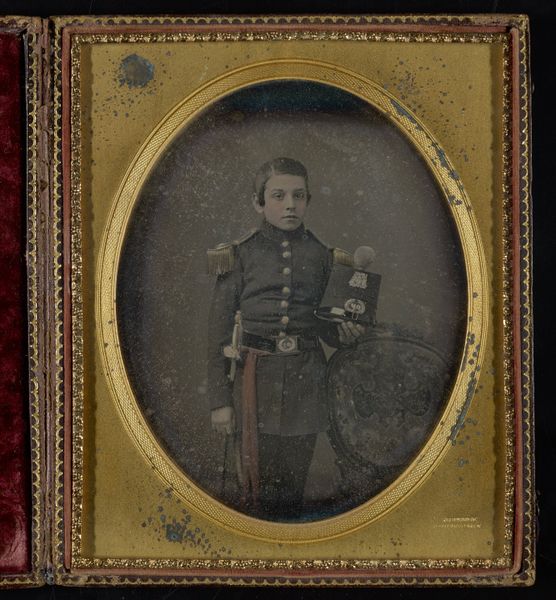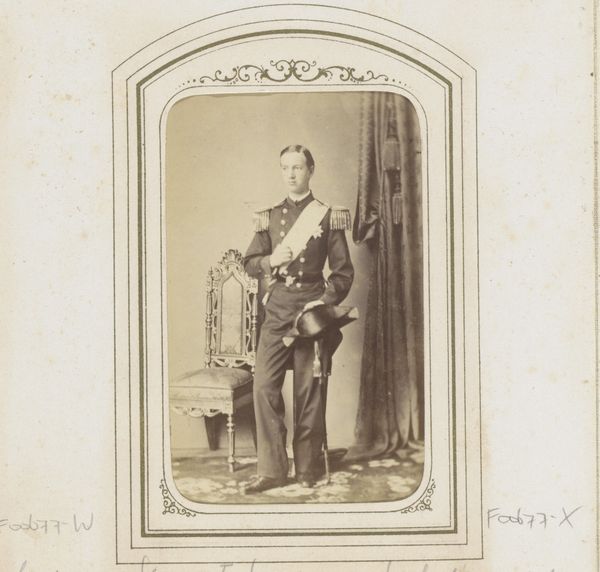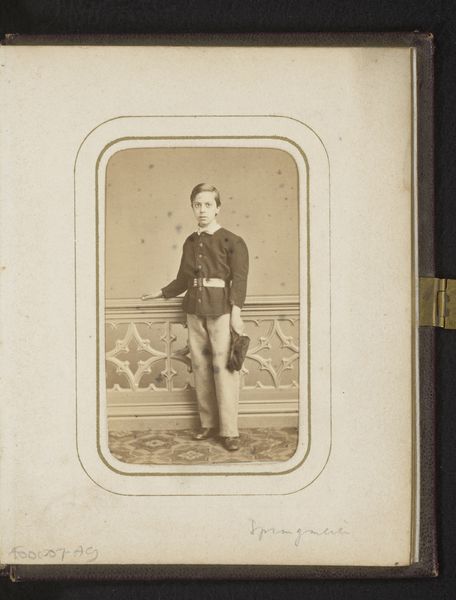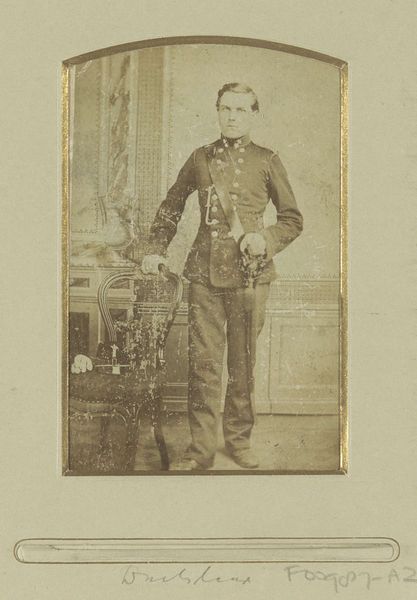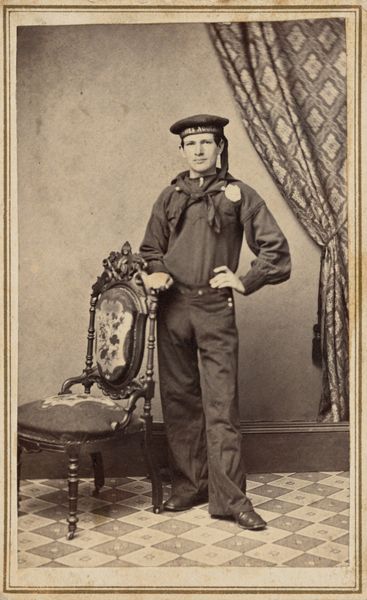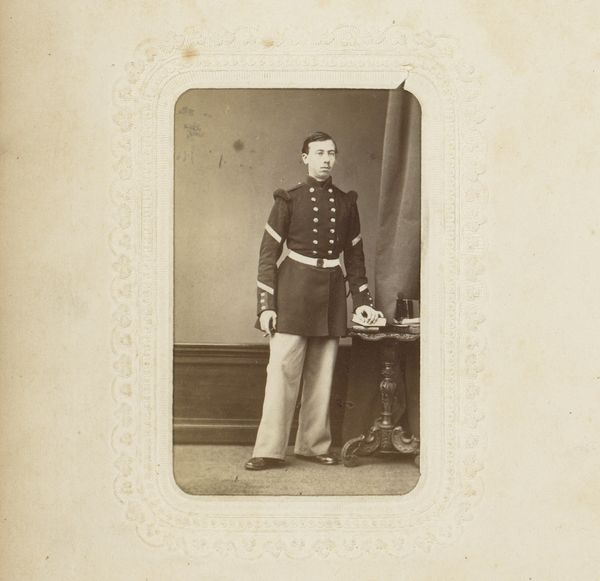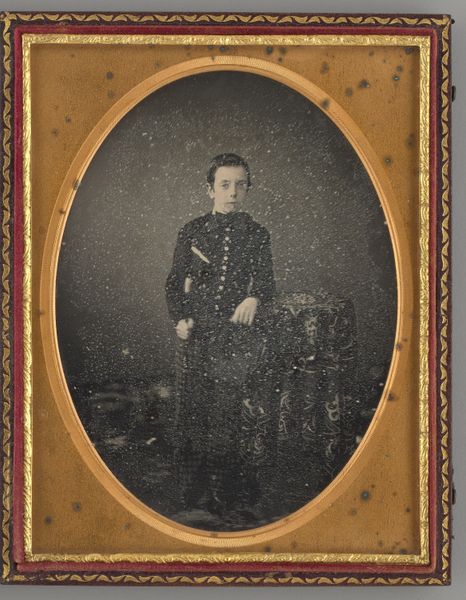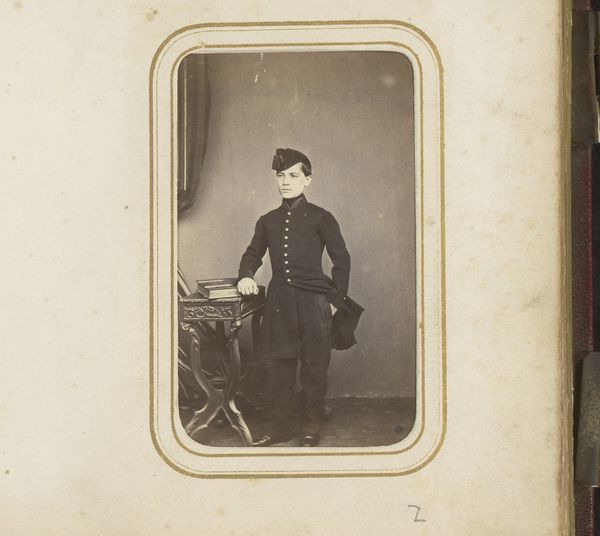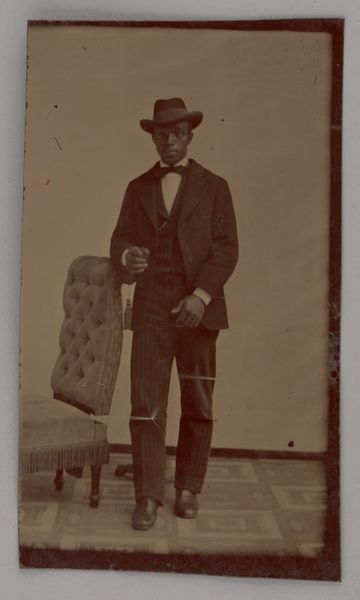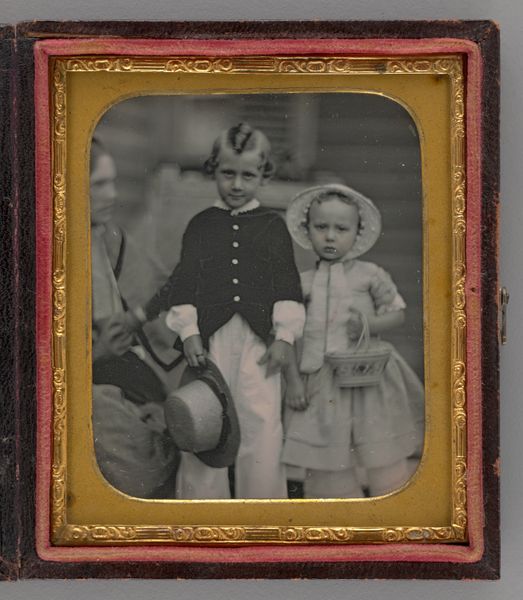
Untitled (Portrait of a Standing Man Wearing a Fireman's Uniform) 1865
0:00
0:00
daguerreotype, photography
#
portrait
#
16_19th-century
#
daguerreotype
#
photography
#
men
#
united-states
#
realism
Dimensions: 21.5 × 16.5 cm (plate, appro×.); 18.4 × 13.1 cm (image, sight); 22.5 × 36 × 1.5 cm (open case); 23.1 × 18.2 × 2.9 cm (case)
Copyright: Public Domain
This portrait of a fireman was created with the wet collodion process, a photographic technique popular in the mid-19th century. A glass plate was coated with light-sensitive chemicals, exposed in a camera, and then developed immediately. The resulting image, known as an ambrotype, has a unique silvery quality and a distinctive tonal range. The final image is a testament to both the photographer’s skill and the material’s inherent qualities. Consider the labor involved in this kind of image making: from preparing the chemicals to carefully posing the subject, photography at the time was as much craft as it was science. The fireman, likely a working-class volunteer, presents himself with dignity, a bouquet of flowers adding a touch of sentimentality. By focusing on the materials and processes of this photograph, we appreciate its historical and social context, and the effort and artistry involved in its creation.
Comments
No comments
Be the first to comment and join the conversation on the ultimate creative platform.
